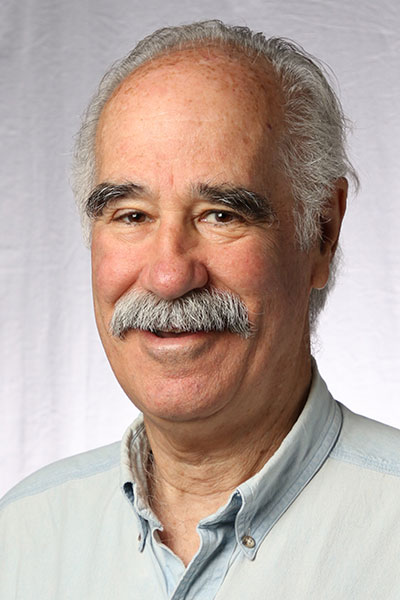Experts debated the merits of initial combination therapy versus sequential therapy during Are Two Better than One? Initial Combination Therapy in Type 2 Diabetes Mellitus at the 83rd Scientific Sessions.
The session can be viewed on-demand by registered meeting participants at ADA2023.org. If you haven’t registered for the 83rd Scientific Sessions, register today to access the valuable meeting content through August 28.

Ralph A. DeFronzo, MD, Professor of Medicine, University of Texas Health Science Center at San Antonio, advocated for the initial use of combination therapy for its ability to efficiently correct multiple pathophysiologic defects. He also asserted that monotherapy led to delays in initiating proper treatments.
Type 2 diabetes causes multiple major pathophysiologic defects in patients:
- Decreased insulin secretion
- Decreased incretin effect
- Increased lipolysis
- Increased glucose reabsorption
- Decreased glucose uptake
- Neurotransmitter dysfunction
- Increased hepatic glucose production
- Increased glucagon secretion
“You’re going to need multiple drugs to correct these eight problems, and you’re going to have to use them in combination,” Dr. DeFronzo asserted.
He emphasized that the prescribed medications should address known pathogenic abnormalities rather than just lowering A1C levels. It’s also vital that patients start treatment early in the natural history of type 2 diabetes to prevent progressive beta-cell failure.
For an initial combination therapy regimen, Dr. DeFronzo recommended a glucagon-like peptide-1 (GLP-1) receptor agonist, sodium-glucose cotransporter-2 (SGLT2) inhibitor, and pioglitazone for all patients. He also highlighted metformin for managing A1C but cautioned that it doesn’t assist with cardiovascular, renal, or metabolic problems in patients with type 2 diabetes like the other three drugs.
“When we think about therapy, there’s just no way that one drug is going to correct all of these problems,” he said.
Among the data Dr. DeFronzo cited to support his argument was the Efficacy and Durability of Initial Combination Therapy for Type 2 Diabetes (EDICT) randomized trial. EDICT studied the effects of initial combination therapy with metformin, pioglitazone, and exenatide versus a sequential add-on therapy approach with metformin, glipizide, and glargine. The study measured the number of patients in each group with A1C levels below 6.5% after three years of treatment.
“With the triple therapy, 70% of the people had an A1C less than 6.5%; with the conventional therapy—metformin, sulfonylurea, insulin—71% of the people failed,” he said.
Dr. DeFronzo characterized monotherapy as the “treat to fail” approach. He argued that prescribing one drug at a time and evaluating its effects on a patient would inevitably lead to a rise in A1C over time, even after an initial dip. This is also a timely process, which can prevent clinicians from managing the progression of retinopathy or albuminuria early in the history of type 2 diabetes.
“The faster you start the control, and the better the control, the less likely there are going to be long-term complications,” Dr. DeFronzo said.

Nathan, MD
David M. Nathan, MD, Director of the Clinical Research Center and of the Diabetes Center at Massachusetts General Hospital and Professor of Medicine at Harvard Medical School, argued that sequential therapy is a more verifiable and efficient initial approach to type 2 diabetes management than combination therapy because of its lower cost and the ability to individualize therapies for patients based on their response to a drug while measuring the side effects of individual therapies. He also questioned the validity of trial data that supports the initial application of combination therapy.
Like Dr. DeFronzo, he examined the EDICT study, which he credited as one of the only trials that analyzed the effects of different therapies over a prolonged period. However, he argued that the data showed only marginal overall benefits for patients on combination therapy with one notable disadvantage: cost. He said combination therapy costs approximately $1,300 per month in the U.S., while sequential treatment costs $85 per month.
“The additional cost per year of starting this combination therapy in, let’s say, the 1.5 million new cases per year with type 2 diabetes in the United States would be $22 billion compared to treating them sequentially,” he said.
Dr. Nathan also contended that combination therapies fail to provide valuable insights that enable providers to take an individualized approach to treatment. Starting patients on several drugs at once precludes the physician’s ability to assess the benefits and side effects individual drugs can produce.
Dr. Nathan also reviewed PubMed data from studies that examined the efficacy of combination therapies versus monotherapy for the initial treatment of type 2 diabetes and identified 19 unique randomized control trials.
“Initial combination therapy has generally only been tested for brief, clinically insufficient periods, and therefore, I think sequential therapy is still what is called for,” Dr. Nathan asserted.
He shared data from an array of trials that initially showed lower levels of A1C associated with combination therapy but a progressive decline in comparative benefits over several years.
“We have to beware of these early studies because they really don’t represent anything like clinically important duration studies,” he cautioned.
Dr. Nathan also pointed out that 16 of the 19 studies examined combination therapy versus monotherapy, not sequential therapy. Sequential therapy allows a provider to observe the effects of a drug on a patient before moving to a new treatment if needed. Monotherapy studies analyze a single form of treatment without follow-up. According to Dr. Nathan, these studies fail to replicate an accurate clinical approach.
“Well-powered, acceptable duration studies need to be performed before we can adopt initial early combination therapy as the standard of care,” he said.